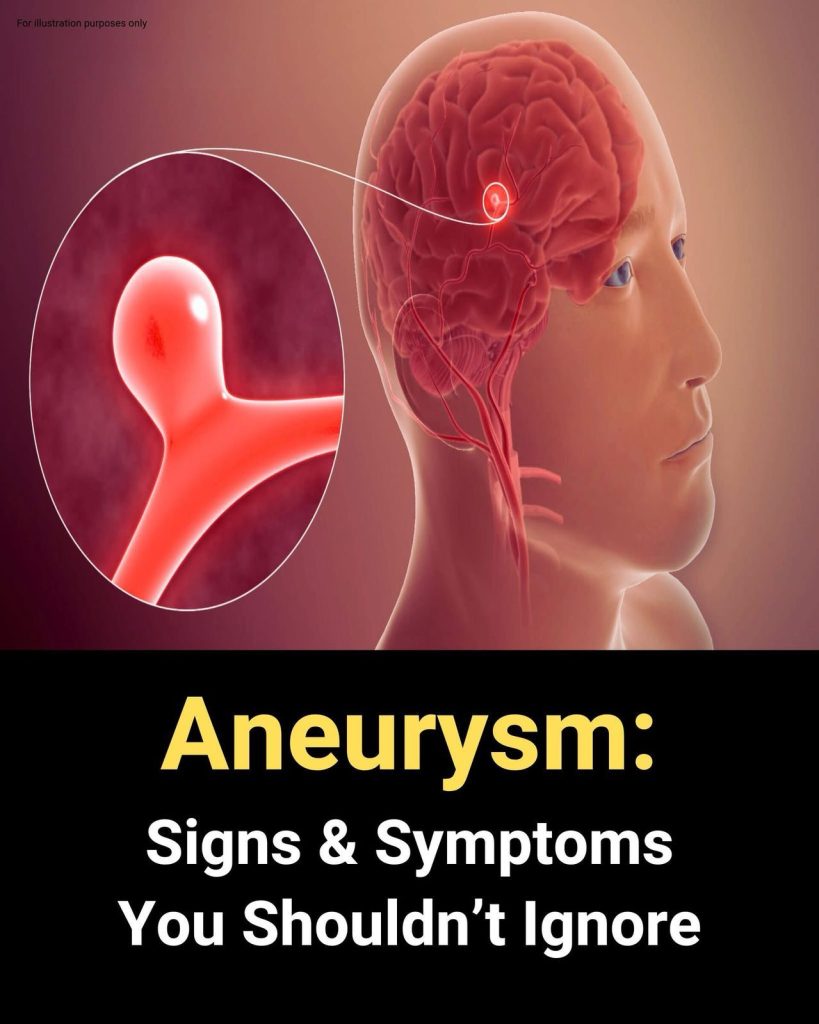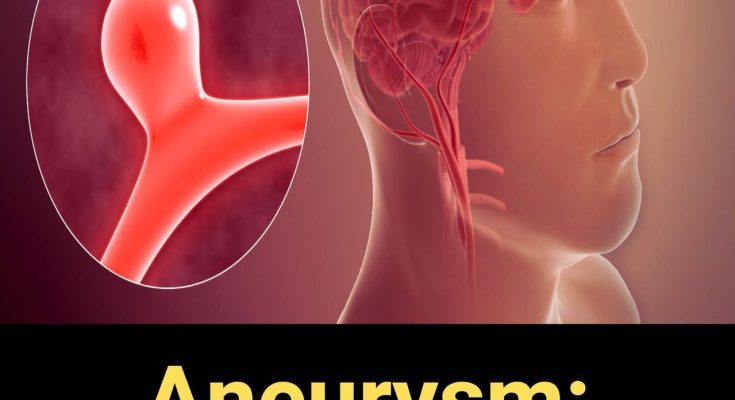
An aneurysm is an abnormal bulge or ballooning in the wall of a blood vessel. It can form in any blood vessel, but it’s most dangerous in major arteries like those in the brain (cerebral aneurysm), aorta (aortic aneurysm), or peripheral arteries in the limbs.
If the aneurysm ruptures, it causes internal bleeding, stroke, or death — but it often gives warning signs before reaching that point.
1. Brain Aneurysm (Cerebral Aneurysm)
What happens?
The artery wall weakens in the brain, forming a bubble-like bulge. This can put pressure on surrounding brain tissue or nerves — or rupture and cause a hemorrhagic stroke.
Before Rupture – Early Signs:
- Sudden, severe headache (sometimes called a “thunderclap” headache)
- Visual disturbances (blurred vision, double vision, loss of vision)
- Pain behind or above one eye
- Dilated pupil
- Drooping eyelid (ptosis)
- Weakness or numbness on one side of the face
- Difficulty concentrating or confusion
- Loss of balance or coordination
After Rupture – Emergency Signs:
- Intense, sudden headache
- Stiff neck
- Nausea or vomiting
- Seizures
- Fainting or coma
- Sensitivity to light (photophobia)
- Sudden confusion or trouble speaking
Ruptured brain aneurysms are fatal in about 40% of cases. Early detection is critical.
2. Aortic Aneurysm (Abdominal or Thoracic)
The aorta is the largest artery in the body — and when it balloons out, it’s life-threatening.
Abdominal Aortic Aneurysm (AAA):
- Deep, constant pain in your abdomen or side
- Pulsating feeling near your belly button
- Back pain (that may radiate to legs or groin)
- Sudden drop in blood pressure if ruptured
Thoracic Aortic Aneurysm (TAA):
- Chest pain (sharp, tearing, or throbbing)
- Back or shoulder pain
- Shortness of breath
- Difficulty swallowing
- Persistent cough or hoarseness
- Sudden loss of consciousness (if ruptured)
3. Peripheral Aneurysms
These occur in arteries outside the chest and abdomen, commonly in the legs (popliteal), arms, or neck.
Symptoms May Include:
- A pulsating lump under the skin
- Cramping or pain in the limb when walking (claudication)
- Coolness or discoloration of toes/fingers
- Tingling or numbness in limbs
Risk Factors to Watch For:
- High blood pressure (hypertension)
- Smoking
- High cholesterol
- Atherosclerosis (plaque buildup in arteries)
- Family history of aneurysms
- Connective tissue disorders (like Marfan syndrome)
- Trauma or infection
Diagnosis & Screening
Doctors may use:
- CT scan or MRI
- Ultrasound (especially for abdominal aneurysms)
- Cerebral angiogram (for brain aneurysms)
Regular screenings are recommended for men over 65 who smoke or have a family history of AAA.
How to Protect Yourself:
- Control blood pressure
- Quit smoking immediately
- Eat a heart-healthy diet
- Get regular check-ups, especially if you’re at risk
- Manage stress
- Stay physically active (as advised by your doctor)
When to Call Emergency Services
If you or someone near you experiences:
- A sudden, blinding headache
- Sharp, tearing chest or back pain
- Loss of consciousness
- Seizure
- Numbness or paralysis
Don’t wait. Call emergency services immediately — every minute matters

